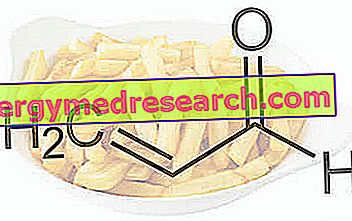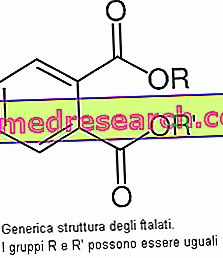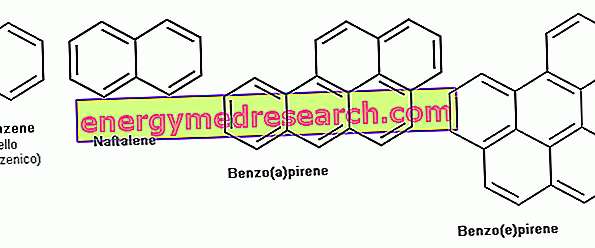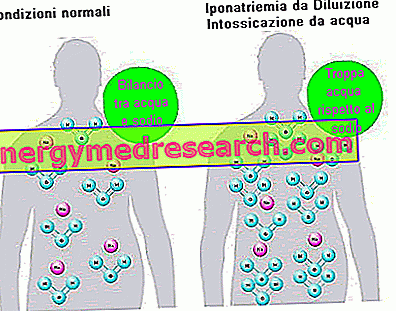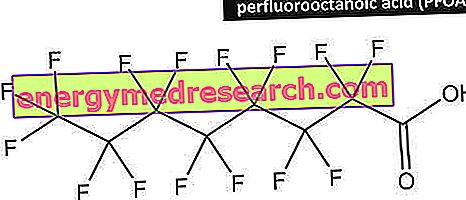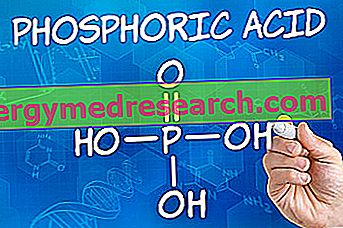When bitten by a viper , it is first of all important to remain calm and try to reach an emergency room for antidote administration as soon as possible. Even if it is difficult, it is not necessary to start running, which would favor the spreading of poison in the circulation, but limit movement as much as possible
Category toxicity and toxicology
Generality Hydrogen sulphide - otherwise known as hydrogen sulfide or hydrogen sulfide (H 2 S) - is a molecule soluble in water and ethanol, which gives off a very strong smell of "rotten eggs". Hydrogen sulfide (H 2 S) is a weakly acidic diprotic molecule, that is having 2 H + protons, which, at room temperature, diffuses into the air in gaseous form; hydrogen sulfide (H 2 S) is responsible for the salification of sulphides , of which only a few are hydrophilic
What is the Acrolein Acrolein is a volatile, hepatotoxic and irritating ALDEHYDE for all the mucous membranes of the body; synonyms of acrolein are acrylaldehyde or 2-propenal . Production The acrolein derives from the catabolism of GLYCEROL [esterified with fatty acids in triglycerides (lipids)] and is produced significantly during: Thermal overcoming of the "smoke point" of fats and cooking oils during cooking Cigarette burning (smoking) The incorrect fermentation of the must in the wine sector; this reaction is catalyzed by the enzymes of lactic bacteria (in case of processing erro
What is bisphenol? Bisphenol, although it would be more correct to speak of bisphenols, is a compound that is obtained by acid or alkaline condensation of two phenol molecules with an aldehyde or ketone molecule. By esterification of bisphenol with diphenylcarbonate (or by condensation with phosgene) thermoplastic polycarbonates are obtained; some types of disphenol are used as stabilizers of monomers or polymers such as resins and cauciù.
What are phthalates? Phthalates are esters of phthalic acid, obtained by esterification of phthalic anhydride and an alcohol. The most common phthalates are diisodecyl phthalate (DIDP), diisononyl phthalate (DINP), benzylbutyl phthalate (BBzP), and especially di-2-ethylhexyl phthalate (or dioctyl phthalate, DEHP)
In chemistry, hydroxymethylfurfural - HMF (C 5 H 4 O 2 ) - is a VOLATILE and HARMFUL molecule, produced by the alteration of sugars / carbohydrates / carbohydrates during cooking due to degradation of pentoses and / or Maillard reaction . NB. hydroxymethylfurfural - HMF ALSO constitutes a very important bacterial fermentation indicator
Generality Hydrocarbons are binary organic molecules, that is composed of two types of atoms: carbon (C) and hydrogen (H). Hydrocarbons can be short or long and the simplest (which has only one carbon atom) is also one of the best known: methane (CH 4 ). Hydrocarbons can be solid, liquid or gaseous, and from the chemical point of view they are divided into AROMATIC (BENZENE or POLYNUCLEATE, all stable thanks to a benzene ring) and ALIFATICI (in turn SATURI or INSATURE)
Water intoxication can be differentiated into: CHRONIC water intoxication ACUTE water intoxication It is always a body hyperhydration at the expense of extracellular sodium concentrations (dilution hyponatremia), which causes strong metabolic and homeostatic decompensation; however, CHRONIC water intoxication and ACUTE water intoxication differ from one another in ATIOLOGICAL CAUSES and ASSOCIATED CLINICAL FRAMEWORK
What are PFAS? PFAS is the acronym of " perfluoroalkyl substances ". These are chemical compounds belonging to the surfactant category and used since 1950 in a wide range of industrial applications and more. For example, PFAS is required for: Body care products Fire-fighting foams Waterproof, make various objects such as: Food containers and packaging, eg plastic boxes, waxed paper, etc
What is Teflon? Teflon, chemically defined as polytetrafluoroethylene (PTFE), is a synthetic polymer of tetrafluoroethylene made entirely of carbon and fluorine; characterized by a high molecular weight, it shows a completely solid consistency. Teflon was invented by "DuPont Co". It is a material with numerous instrumental and coating applications in various sectors
Generality Orthophosphoric acid - more commonly known as " phosphoric acid " - is an inorganic acid having the brute formula H3PO4. It is an acid used in various fields, the use of which requires a certain caution, especially when it is found in high concentrations. In fact, orthophosphoric acid is a corrosive compound; therefore, although it can be purchased with relative ease, its use requires knowledge of the characteristics of the product and must be carried out by taking appropriate precautions



